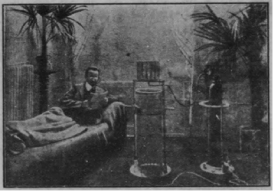The emergence of modern health-related commodities and tourism in the late Meiji and Taisho eras (1900s to 1920s) was paradoxically accompanied by a revival of spiritualist religions, many of which had origins in folk belief. What helped this paradox was the people’s interpretation of radiation. The project will underscore the linkages between radiation, science, and spiritualism in Japan at the time of modernization and imperialism.
In the early twentieth century, the medical use of radiation had been established through scientific research and the existence of radiation came to be known to the public because of its special efficacy in healing the human body. Therefore, radiation had a positive image and radium became a fad in the 1910s. In Japan, the concept of radiation harmonized with both Western culture and Japanese traditional culture. Interestingly, there were many people who described radiation in spiritual terms. The project investigates how discourses on radiation and radium as a commodity, which came from Western countries, mainly from Germany, were imported and absorbed into Japanese culture. This inquiry is important in discussing Japanese national identity in the context of science and technology.
Understanding the Japanese acceptance of radiation is relevant to developing a global history of science, as countries the world over have had to reconcile Western science with traditional culture. As a whole, this project tries to rewrite the map of the transits of scientific ideas and religious-philosophical themes of spiritualism in the age of imperialism.

